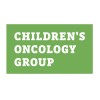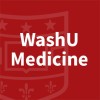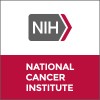
A Study of JNJ-67856633 in Participants With Non-Hodgkin's Lymphoma (NHL) and Chronic Lymphocytic...
LeukemiaLymphocytic4 moreThe purpose of this study is to determine the recommended Phase 2 dose regimen or the maximum tolerated dose of JNJ-67856633 in participants with relapsed/ refractory B-cell non-Hodgkin lymphoma and chronic lymphocytic leukemia.

Palbociclib in Combination With Chemotherapy in Treating Children With Relapsed Acute Lymphoblastic...
LeukemiaLymphocytic5 moreAINV18P1 is a Phase 1 study where palbociclib will be administrated in combination with a standard re-induction platform in pediatric relapsed Acute Lymphoblastic Leukemia (ALL) and lymphoblastic lymphoma (LL). LL patients are included because the patient population is rare and these patients are most commonly treated with ALL regimens. The proposed palbociclib starting dose for this study will be 50 mg/m^2/day for 21 days.

Goal Management Training for Adult Survivors of Childhood Leukemia and Non-Hodgkins Lymphoma With...
Childhood Non-Hodgkin LymphomaChildhood Acute Lymphoblastic Leukemia1 moreSurvivors of childhood cancer are at risk for developing neurocognitive sequelae. Multiple meta-analyses demonstrate significant deficits in overall intellectual abilities, academic functioning and specific cognitive skills among survivors of childhood cancer treated with intrathecal chemotherapy only and/or cranial irradiation. Preventing neurocognitive deficits is therefore of great importance. Unfortunately, intervention studies for this group of survivors are scarce. The main aim of this randomized controlled trial is to determine the efficacy of Goal Management Training (GMT) as a group-based treatment program for 60 adult survivors of childhood leukemia, and non Hodgkins lymphoma, diagnosed between 1980 and 2017 at an age below 18, with attention and executive function deficits. The participants will be randomized to one treatment group (GMT), and one waitlist condition followed by one active control intervention, the "Brain health workshop" (BHW), which has a psycho-educative approach. The follow-up time from diagnosis will be ≥5 years and the age at survey 18-40 years. The study will expand the knowledge base on treatment factors important in improving cognitive function. Results from this study can be implemented in rehabilitation for the young adult survivors of childhood leukemia, and non Hodgkins lymphoma, which will be of importance for their future educational and work-related functioning.

Carfilzomib, Rituximab, and Combination Chemotherapy in Treating Patients With Diffuse Large B-Cell...
Contiguous Stage II Adult Diffuse Large Cell LymphomaNoncontiguous Stage II Adult Diffuse Large Cell Lymphoma3 moreThis phase I/II trial studies the side effects and best dose of carfilzomib when given together with rituximab and combination chemotherapy and to see how well they work in treating patients with diffuse large B-cell lymphoma. Carfilzomib may stop the growth of cancer cells by blocking some of the enzymes needed for cell growth. Monoclonal antibodies, such as rituximab, can block cancer growth by finding cancer cells and helping kill them. Drugs used in chemotherapy work in different ways to stop the growth of cancer cells, either by killing the cells or by stopping them from dividing. It is not known if carfilzomib in combination with R-CHOP is better or worse than R-CHOP alone in treating patients with diffuse large b-cell lymphoma.

Zevalin Before Stem Cell Transplant in Treating Patients With Non-Hodgkin Lymphoma
Refractory Non Hodgkin LymphomaRelapsed Non Hodgkin LymphomaThis phase II trial studies how well ibritumomab tiuxetan before donor peripheral blood stem cell transplant works in treating patients with relapsed or refractory non-Hodgkin lymphoma. Giving rituximab, antithymocyte globulin, and total-lymphoid irradiation (TLI) before a donor peripheral blood stem cell transplant helps stop the growth of cancer cells and helps stop the patient's immune system from rejecting the donor's stem cells. Also, radiolabeled monoclonal antibodies, such as ibritumomab tiuxetan, can find cancer cells and carry cancer-killing substances to them without harming normal cells. When the healthy stem cells from a donor are infused into the patient they may help the patient's bone marrow make stem cells, red blood cells, white blood cells, and platelets. Sometimes the transplanted cells from a donor can make an immune response against the body's normal cells. Giving rituximab, antithymocyte globulin, and TLI before the transplant together with cyclosporine and mycophenolate mofetil after the transplant may stop this from happening. Giving a radiolabeled monoclonal antibody before a donor peripheral blood stem cell transplant may be an effective treatment for non-Hodgkin lymphoma.

SC-PEG Asparaginase vs. Oncaspar in Pediatric Acute Lymphoblastic Leukemia (ALL) and Lymphoblastic...
Acute Lymphoblastic LeukemiaLymphoblastic LymphomaThis study is being conducted to learn about the effects of SC-PEG, which is a new form of a chemotherapy drug called asparaginase. Asparaginase is used to treat ALL and lymphoblastic lymphoma. The standard form of asparaginase, called Elspar, is given in the muscle once a week for 30 weeks. There are other forms of asparaginase. The investigators will be studying two of these: Oncaspar and Calaspargase Pegol (SC-PEG). The investigators have previously studied giving Oncaspar in the vein (instead of the muscle) every 2 weeks in patients with ALL, and have shown that this dosing did not lead to any more side effects than Elspar given weekly in the muscle. The study drug, SC-PEG, is very similar but not identical to Oncaspar. SC-PEG has been given in the vein to children and adolescents with ALL as part of other research studies, and it appears to last longer in the blood after a dose than Oncaspar. It has not yet been approved by the FDA. The goal of this research study is to learn whether the side effects and drug levels of SC-PEG given in the vein every 3 weeks are similar to Oncaspar given into the vein about every 2 weeks. The study will also help to determine whether changing treatment for children and adolescents with ALL with high levels of minimal residual disease may improve cure rates. Measuring minimal disease (MRD) is a laboratory test that finds low levels of leukemia cells that the investigators cannot see under the microscope. In the past, it has been shown that children and adolescents with ALL with high levels of MRD after one month of treatment are less likely to be cured than those with low levels of MRD. Therefore, on the study, the bone marrow and blood at the end of the first month of treatment will be measured in participants with leukemia, and changes in therapy will be implemented based on this measurement. It is not known for sure that changing treatment will improve cure rates. MRD levels can only be measured if the marrow is filled with cancer cells at the time of diagnosis. Therefore, MRD studies will only be done in children and adolescents with ALL and not in those with lymphoblastic lymphoma. Another part of the study is to determine whether giving antibiotics during the first month of treatment even to participants without fever will prevent serious infections in the blood and other parts of the body. About 25% of children and adolescents with ALL and lymphoblastic lymphoma who receive standard treatment develop a serious blood infection from a bacteria during the first month of treatment. Typically, antibiotics (medicines that fight bacteria) are given by vein only after a child with leukemia or lymphoma develops a fever or have other signs of infection. In this study, antibiotics will be given by mouth or in the vein to all participants during the first month of treatment, whether or not they develop fever. Another goal of the study to learn how vitamin D levels relate to bone problems (such as broken bones or fractures) that children and adolescents with ALL and lymphoblastic lymphoma experience while on treatment. Some of the chemotherapy drugs used to treat ALL and lymphoblastic lymphoma can make bones weaker, which make fractures more likely. Vitamin D is a natural substance from food and sunlight that can help keep bones strong. The investigators will study how often participants have low levels of vitamin D while receiving chemotherapy, and, for those with low levels, whether giving vitamin D supplements will increase those levels. Another focus of the study is to learn more about the biology of ALL and lymphoblastic lymphoma by doing research on blood, bone and spinal fluid bone marrow samples. The goal of this research is to improve treatment for children with leukemia in the future.

Lenalidomide and Rituximab in Subjects With Previously Untreated Indolent Non-Hodgkin's Lymphoma...
Non Hodgkin's LymphomaLenalidomide has been shown to have single agent activity in indolent Non-Hodgkin's Lymphoma. It is approved for the treatment of multiple myeloma and myelodysplastic syndrome. Rituximab is effective as a single agent and in combination with chemotherapy for indolent Non-Hodgkin's Lymphoma. The purpose of this study is to see how well giving lenalidomide together with rituximab works in treating patients with previously untreated indolent Non Hodgkin's Lymphoma. Lenalidomide will taken at 20 mg daily, days 1-21 of a 28 day cycle, to be continued until the disease progresses, unacceptable side effects or after twelve cycles if the patient is responding well. Rituximab 375 mg/m2/wk x 4 weeks will begin on Day 15 of cycle 1. After 4 cycles of therapy, if patients respond well to treatment, patients will receive a second course of Rituximab. Blood samples will be collected to assess how the immune system is functioning.

Tandem Stem Cell Transplantation for Non-Hodgkin's Lymphoma
LymphomaNon-HodgkinThis is a research study testing a new approach to treating high-risk non-Hodgkin's lymphoma consisting of an autologous hematopoietic (blood) stem cell transplant (using a patient's own hematopoietic cells) followed by a non-myeloablative allogeneic transplantation (transplant from another individual). The investigators hypothesize that the addition of the second non-myeloablative transplant will improve the chances for long-term control of lymphoma.

Veliparib, Cyclophosphamide, and Doxorubicin Hydrochloride in Treating Patients With Metastatic...
Ann Arbor Stage III Non-Hodgkin LymphomaAnn Arbor Stage IV Non-Hodgkin Lymphoma1 moreThis phase I trial studies the side effects and best dose of veliparib, cyclophosphamide, and doxorubicin hydrochloride when given together in treating patients solid tumors or non-Hodgkin lymphoma that has spread to other areas of the body or cannot be removed by surgery. Veliparib may stop the growth of cancer cells by blocking some of the enzymes needed for cell growth. Drugs used in chemotherapy, such as cyclophosphamide and doxorubicin hydrochloride, work in different ways to stop the growth of cancer cells, either by killing the cells, by stopping them from dividing, or by stopping them from spreading. Giving veliparib, cyclophosphamide, and doxorubicin hydrochloride may kill more cancer cells.

Genetically Engineered Lymphocyte Therapy After Peripheral Blood Stem Cell Transplant in Treating...
Recurrent Grade 1 Follicular LymphomaRecurrent Grade 2 Follicular Lymphoma3 moreThis phase I/II trial studies the side effects and best dose of genetically engineered lymphocyte therapy and to see how well it works after peripheral blood stem cell transplant (PBSCT) in treating patients with high-risk, intermediate-grade, B-cell non-Hodgkin lymphoma (NHL). Genetically engineered lymphocyte therapy may stimulate the immune system in different ways and stop cancer cells from growing. Giving rituximab together with chemotherapy before a PBSCT stops the growth of cancer cells by stopping them from dividing or killing them. Giving colony-stimulating factors, such as filgrastim (G-CSF), or plerixafor helps stem cells move from the bone marrow to the blood so they can be collected and stored. More chemotherapy or radiation therapy is given to prepare the bone marrow for the stem cell transplant. The stem cells are then returned to the patient to replace the blood-forming cells that were destroyed by the chemotherapy. Giving genetically engineered lymphocyte therapy after PBSCT may be an effective treatment for NHL.
